The archival attempts of the artists living and creating in the pre-smartphone era are marked by incapacity, deterioration, failure, loss. Nevertheless these attempts also form immaterial memories if divulged, and become clues on the journey of rewriting histories. There is a kind of performativity to those documents; pulled out into public view, some only for the second time since they were created. The generation who only has feelings about the traumatic experiences of totalitarianism, but no experience of it, the ones germinated between polyphonic ringtones and snapchat, had a chance to attach concrete images to an underground performance history with this show. For pre ’89 Eastern European art, where totalitarianism prevented individuals from exploring both untrained forms of expression and usage of technological advancement, the underground was sometimes a household, some other times the streets, or letters, music, or even existed in silence. Documentation was a secondary option to its primordial purpose, thus in some cases, it became the artwork itself. The first rule of reading these documents – remember that conditions were different from one state to the other. Performance art, as a broad denomination, hides its secrets well, remains volatile, fluid, flexible and obscure both in its form and in meeting the expectations of the audience. The use of its main medium – the body as a tool of expressing what is supposed to be private – has been conflicting and flexible in different political environments. There is more to the expressive primordial nudity than that which emerged in those revolutionary years during the ’60s in the West; at the same time in non-Western spaces, official independence movements were just flourishing – like Non-Aligned Movement (NAM). Contrary to most records we find when we examine performance art history, there are small organisms in non-Western spaces that are probably known only by the eyes of witnesses. There is the Eastern nudity, not to be confused with nakedness, that translated bold dreams in happenings/ action body/ action art/ body art. Contrary to the Western performance art, the Eastern one dealt differently with the counter-institutions problematic, for instance in some socialist countries performance art groups were not exactly performing political dependence, also underground movements were born in institutions financed by the state.
Pre ’89 Eastern Europe, as hard as it is to speak about it as an entity, concedes freaky, unwilling-to-behave political and apolitical artistic expressions in the show Left Performance Histories. The ’70s are the day zero; there are 25 famous and underground artists whose interdisciplinary communal attempts of artistic expression are smoothly linked together. The show does not add to the puzzle with a missing piece, but adds complementary intelligence of the ludic, sexualized, playful forms of denial of heteronormative gender/binary, liberties and aesthetics marked by various socialisms throughout the Eastern Bloc. In nGbK, the communal effort is coming from the curatorial research project Action Art Behind the Curtain: Judit Bodor, Adam Czirak, Astrid Hackel, Beáta Hock, Andrej Mircev and Angelika Richter. Together with the exhibition, a public program on the 1st floor broadened the whole picture.
Despite the assumptions, left/lefts was/were revised; anti-communism not the only ideological option, scandal not the only rebelliousness, nudity sometimes the least interpretable costume, humor a necessity, fashion not an industry, blood a wake-up call and queerness a permanent becoming.
The result of the show looks like the autopsy on an angel at the intersection between repression and expression; joyous but consequent. Blurred between art pieces and documentations of artistic performances, regardless of their mediums, the archival material had less aesthetic intention than served its purpose as proofs of a new genealogy of history outside canons of the Western perspective. But then again, as in any recapitulation, the choice of who speaks and who narrates has to be handled with care. Directly beyond the main desk at the entrance, the show resembled a magazine that has never gone to print. Regarded as oppositional, outrageous, indecent, Eastern European performance lineage here and there tried to officially engage with different socialisms. Some of its actors never presented themselves as leftist, but rather as a new political avant garde seeking for alternatives within communist structures.
Lüftung Eins – a workshop
Archives, language, intimacy, love, authority are a few of the subjects the group discussed. In the manner of Gertrude Stein, we walked for two weekends through this show in a gang of 10 women – Petra Beck, Basma Elmady, Christine Eßling, Yayla Höpf, Lena Knäpper, Lena Schubert, Cindy Wegner, and Seoyoung Wo, conceived, recorded, and montaged a radio podcast under the guidance of Anna Bromley – part of the nGbK project group. The group is posing diverse questions that involve the neighboring communities and with Lüftung it seeks to broadcast voices of both the visitors and the artists. This first Lüftung, in a form of a radio art workshop, covers the nGbK-exhibition that looks at the left-inspired performance art-related pieces from the last 50 years in Eastern Europe and this text is also an outcome of it. What the radio show facilitated is, as Achille Mbembe wrote in The Status of Debris, the story made possible by the archive, as the final destination of the archive beyond its materiality.
Listen here to the radio show originally broadcasted on Reboot Radio Berlin.
The Archives
The archive as a social concept, the use of the archive as a means of control, power knowledge, as iterated by Derrida, can be both the Stasi files or the personal records of the artists, now managed by their gallerist or family.
The possibility of looking into the past through these proofs enables various interpretations that are allowing the past to be reiterated and play a part of the actuality. The variety of questions posed by the show permits the visitor a prolonged journey where the platform, archive, archivist, creator and curator inscribe easily into an entity resembling a community/communal effort, otherwise a pattern into these artists’ biographies. Or, a self-exploration: everyday necessary intimacy with the camera as the only spectator, like the case of the work of the conceptual artist Ion Grigorescu, Mirrors, a self-portrait displaying a multitude of reflections of the naked body of the artist, serving as a postcard of remembrance for the usual home-held performances that he used to make. Other works by Grigorescu are at the moment on view in Stedelijk Museum in the show Freedom is Recognized Necessity, which presents a part of the museum’s collection until mid-August. Almost archeological, consisting of images of the development of a performance, the work Free Angela Davis by Tamás Szentjóby is composed of work that had been recently scanned by the research team of the show. The work is thought to be a meeting point between socialism and American democracy, due to the symbolic act of the artist to show oppression in both regimes. It is crucial to mention that annexed to any archival material, the testimonies of these artists serve as very important living documents, which in this show were discussed and could be engaged with within the event program. Another successful aspect of the event series was its creation of a cohesive experience inside the space. The artworks and the documents were displayed almost archaeologically, conflating the two.
Yet, the choices of display, of conserving, call for reinterpretation. In the case of Tomislav Gotovac, who established notable connections between Belgrade and Zagreb, and Mladen Stilinović, both no longer alive, the archives are managed by other people, mostly their wives, whose roles are usually invisible in histories, as noted by the curators. One archival exhumation is the autobiographical film made by Gotovac in 1996, which shows a fast slideshow of images from his life together with images of documents on a square TV screen.
Language
The work of Stilinović, The Dictionary of pain, firstly aims at the issue of the abundance of English language and vernacular languages, and secondarily at order and classification. Stilinović’s work not present in the show in Berlin, An artist who cannot speak English is no artist, 1994, hanging in Van Abbemuseum in Eindhoven (currently shown for similar history-questioning purposes also at Hello World. Revising a Collection at Hamburger Bahnhof, Berlin) is marking these linguistic bursts. This work, worth mentioning in this context, is a good example of remembrance of the Vojvodina movement where several artists were publishing in Hungarian, their mother tongue and other local, minor, languages in the times of Tito’s cultural uniformization. One of those platforms was Symposium publication. One of the artists is Katalin Ladik, the Hungarian poet, performance artist and actress originally from Novi Sad, the capital of Vojvodina. Her biography is marked by paradoxical (a common feature of socialism in practice) happenings, for example she was expelled from the League of Communists of Yugoslavia but she was still a TV star after that. Her performance for the show in nGbK, Alice in Codeland on the 17th of February 2018 kept the appearance of some of her previous works. She got in and out of plastic bags making sounds in very diverse sonic registers, dancing with fabrics and vegetables. Ladik successfully staged a world whose background is made of QR codes and whose soundtracks are acts of a comical-knowledgeable opera, where laughter is allowed and Alice is not a little girl anymore. Katalin’s poetry perforated paper, language, sensuality, abstractism and sound throughout her career. Sometimes with performance art groups- Bosch+Bosch or music groups- Acezantez and Spiritus Noister.
Intimacies
No longer a surprise, the lack of borders between the public and the private space in totalitarian regimes serves as a crucial tool for reading many famous works of the artists of this category. Sanja Iveković’s photomontage Triangle (1979), presented as well in documenta 12, is a crucial act strangled between the private and the public, a turning point in questioning the limits of intimacy in the times of Joseph Tito, the dance and fight with and against surveillance. More precisely in May 1979, Zagreb, when Sanja, against the rules during parades, sat on her balcony reading and pretending to masturbate while the leader’s convoy was passing by.
The lack of intimacy and the intimate life inevitably meeting political acts is very vivid in the body of work signed by Vlasta Delimar. She has a huge share of potent nudity, terrifyingly strong, throughout the show. On a small corridor, a big picture of her invites us into a dark room where a big projector is showing among other pieces Taking a stroll as Lady Godiva (2001), a performance documentation from the center of Zagreb. The original Lady Godiva is said to have been riding naked a horse through medieval Coventry to free citizens from paying tax. Vlasta’s action on a white horse in Zagreb shows her solidarity towards the Croatian citizens in difficult transition times: one important event at that time, Croatia’s official decision to cooperate with the international tribunal at the Hague for the investigation of the war crimes committed during the Croatian/Bosnian/Yugoslav war.
Another free self-love work of Vlasda is Visual orgasms (1981), where she is glowing seduction and desire in twelve portraits taken at the point of climax. During the days of the event series, Vlasda performed Right to an orgasm at over 60 that touches upon three problematics – the lack of the sexualization of a body at over 60 and the absence of Yugoslavian public sexual education on women’s right to sexual pleasure and the possibility of customization of any demand in democratic times. By exposing herself at the window holding a sign with the title of the piece her act can be reduced to sensuality against morality, counter-visibility against suppression, self-exposure against control.
(Institutional) Love
The problematics of marriage are ingrained in tough abortion laws, advantages for families with children, pronatalist policies feeding the patriarchal structures, suppressing any emancipatory attempt.
There is one piece that must awaken the urgency: Ewa Partum’s performance documentation Women, Marriage is against you from Poznań of 1980 was filmed during the festival of Women’s art, and tells plenty about the literal gender inequalities of the times in Poland. Her performance consisted of a manifesto and a physical rejection of the institution of marriage by cutting her dress and spreading it into the audience. Active poetry artist Ewa Partum threw letters all over Poland in her youth and she sometimes used nudity, since her message did not suit any clothes. Her switch to anti-marriage criticism is a milestone of the scene. As an artist who used her biography, as a live example of not being able to tell when performance begins and ends, Judith Kele married and divorced as her practice. In 1979 she presented her naked body as an artwork, one year after she auctioned herself at the Paris Biennale in hope for solidarity to the various crises happening in her country. On the 16th of February 2018, Judith married herself and invited the audience to celebrate a fulfilling act of self love.
Authority
Totalitarian rulers, Lenin or secretly God. Bálint Szombathy is one of the founding members of Bosch + Bosch, another Vojvodina-based progressive artist dealing with publishing. For one 1st of May in Budapest, Szombathy decided to start waving the portrait of Lenin instead of the portrait of the Hungarian communist leader János Kádár, practically disobeying the initial celebratory feel of an imposed kind of socialism. For the opening of Left Performance histories, Szombathy was kissing people through Lenin’s mask.
A woman with red hair and red eyelids is smoking more than 5 cigarettes at a time and gets an orgasmic pleasure out of fast and intense drags, then she gives birth to a golden ball and a red piece of cloth, displaying her primordial pain as a spectacle for two men dressed in suits. The story goes on in stop motion watercolor characters on big canvases, a recurrent method in the artist’s works. Christine Schlegel’s Supper is held with Jesus Christ, Death, a rich man, a prostitute and a politician and speaks about the necessary rebirth of canons, among which the most important, socialism. Christine Schlegel is an artist from East Berlin who used painting, dance, film screenings, live music in her performances.
A theater piece knows it’s a film knows it’s a performance – Dzsan Panoptikum film by El Kazovszkij is the piece that sonically dominates the space. Built as a series of performances, Panoptikum is a universe of non-binary royal props of mixed signals sexualities. The piece beholds international gay subculture aesthetics in a highly politicized carnival in which El Kazovszkij himself gave life to the characters. Physically, the piece opens the appetite for the opposition to gendered cultural norms and fashion, few steps away from Tamas Kiraly’s Red dress, the artists who organized noncommercial fashion performances spiced up with political mockery when Eastern Bloc fashion was nonexistent.
The art-focused nostalgists, nostalgics, restro-nostalgics, ostalgics, and other fans of former times, got served a super progressive chunk of the past that must have incited critical fear of missing out. The publication of this show will bring back some left-left asides and will hopefully serve not only as research, but as inspiration. Today’s collective activities in EE seem nonexistent since they are not imposed anymore. People gather in data, in frameworks, but not necessarily in tandem with their will. Individualism as aim is the bread we don’t have to queue for. Caught between two cardinal points, neither worthy of mercy nor to be accused – completely confused. What is happening less, even though possible, is self-organizing collectively on building collective memory, nurturing the current political psychosis at least in thought if not in collective acts. The word collective needs a facelift, a refreshed coat and that can only happen around kindness and knowledge intertwined. The lack of care for the individual versus the critical instigation for individualism are two of the intersectional issues causing the incapacity of acting together and having each other’s backs when nothing and no-one, centralized or not, takes the responsibility of nurture. Inside and outside EE both the art collections and populations are spicing up the ready-developed territories. Also collectively we have to rewrite the histories written by the strongest, the loudest, often the perpetrators. That is an invitation. Or practice the so-called self-insertion against our precarity as a resistance if not as production of power. This show is not solving, but igniting solutions to such issues, and it definitely adds more letters to a missing alphabet in which the ABC are Fluxus, Beuys and Abramović (who did not have it easy either). It does what art should look into doing more often, but this is a call for action, since those exhumations won’t work by themselves.
Bibliography:
Eva Partum (2012) “Active Poetry” [online video] (Accessed: 26 April 2018).
Batycka, D. and Gravenor V. (2018) “‘Left Performance Histories’ at nGbK in Berlin,” blok magazine [online article] (Accessed: 24 April 2018).
Bryzgel, A. (2014) “Continuity And Change: Performance Art In Eastern Europe Since The 1960s” Idea No.45 [online article] (Accessed: 24 April 2018).
Maria Paula Erizanu (2016) “Culture, alcohol and propaganda in Eastern Europe“ [online video] (Accessed: 26.04.2018).
District (2014) The Forgotten Pioneer Movement – Guidebook. Hamburg. Textem Verlag.
Domonkos, I. (2009) “The Language Switch of István Domonkos. Translation as a Metaphor of Being” Szövegek között (13/2009) [online article] (Accessed: 24 April 2018).
Tate Shots (2017) “Ewa Partum – ‘It is the Obligation of Every Woman to be a Feminist’”[online video] (Accessed: 26.04.2018).
Maria Paula Erizanu (2016) “Culture, alcohol and propaganda in Eastern Europe“ [online video] (Accessed: 26.04.2018).
Stedelijk Museum, “Freedom is Recognized necessity”, [online] (Accessed: 24 April 2018).
Grosz, E. (1994) “Chapter 1. REFIGURING BODIES” Volatile bodies Toward a Corporeal Feminism, Bloomington. Indiana University Press.
Jacques J. (2013) “On ‘Triangle’ by Sanja Iveković,” News Statement, 29 May 2013 [online] (Accessed: April 24, 2018).
documenta14 “Katalin Ladik,” [online] Available at: (Accessed: 24 April 2018).
Kürti, E. (2017) KATALIN LADIK: SCREAMING HOLE. Poetry, Sound and Action as Intermedia Practice in the Work of Katalin Ladik. Budapest.
NGBK. “Left Performance Histories,” [online] (Accessed 24 April 2018).
Mbembe, A. (2016) “The Status of Debris” in Tali M., Rander T. Eesti, Archives and disobedience: changing tactics of visual culture in Eastern Europe. Kunstiakadeemia Kirjastus, 2016.
Gregoric, A. and Milevska S. “Inside Out: Critical Art Practices That Challenge the Art System and Its Institutions” in Inside Out – Not so White Cube exhibition catalogue Mestna galerija, Ljubljana, 2015.
Varga, N. (2014) “Budapest: Tamás Király and the Hungarian fashion revolution,” Not Just A Label, 18 November 2014 [online] (Accessed: 24 April 2018).
Ludwig Museum. “Szombathy, Bálint: Lenin in Budapest (1972-2010)” [online] (Accessed: 24 April 2018).
Thanks to Anna Bromley and Gwen Mitchell, who agreed to read the text before publishing it.
Special thanks to the Lüftung Eins team: Petra Beck, Basma Elmady, Christine Eßling, Yayla Höpf, Lena Knäpper, Lena Schubert, Cindy Wegner, and Seoyoung Wo from whom I got most of the ideas tha tmotivated me to write this text.
Left Performance Histories, a show by the Neue Gesellschaft für bildende Kunst, Berlin, on gender, identity, and nationality was on display from February 3rd to March 25th, 2018.
POSTED BY
Jasmina Al-Qaisi
Jasmina Al-Qaisi (b. 1991) is a visual ethnographer and a cultural correspondent. She lives in Berlin and works in the archive of the art and project space Savvy Contemporary....


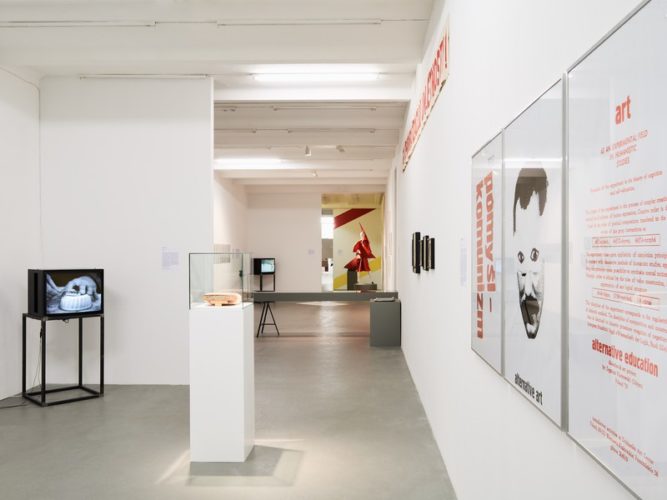
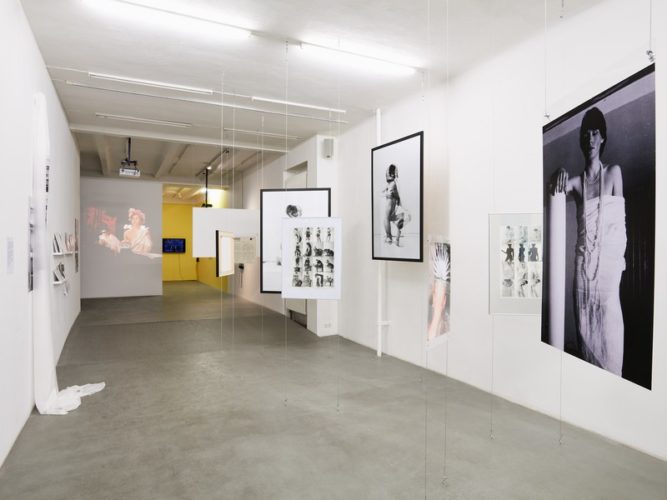
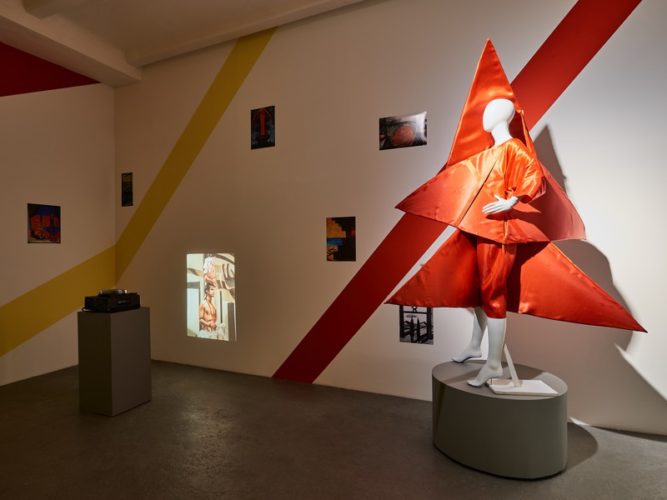
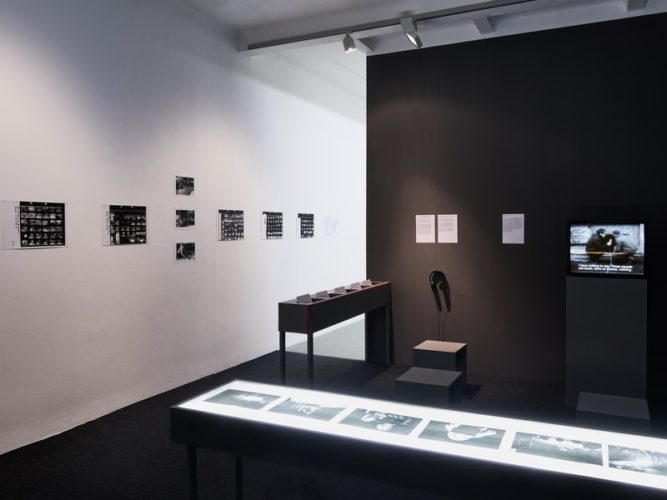
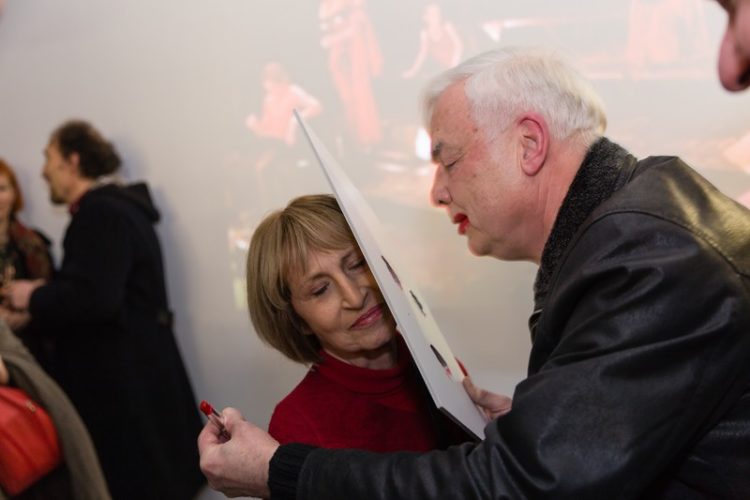
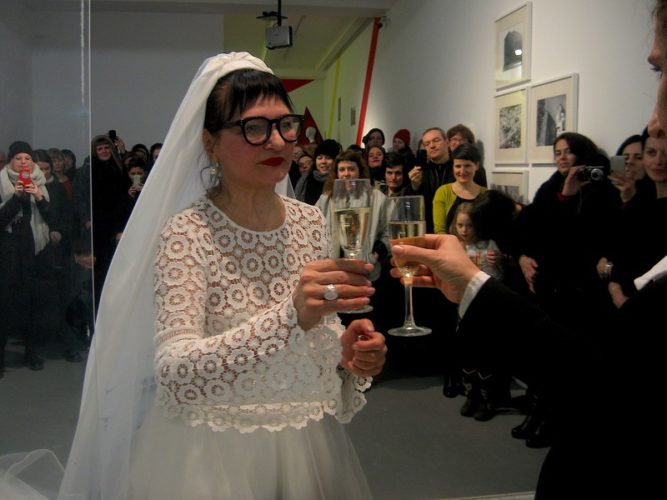
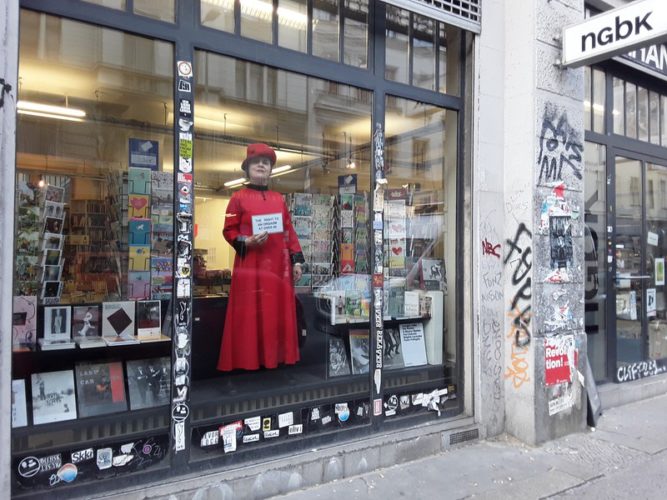
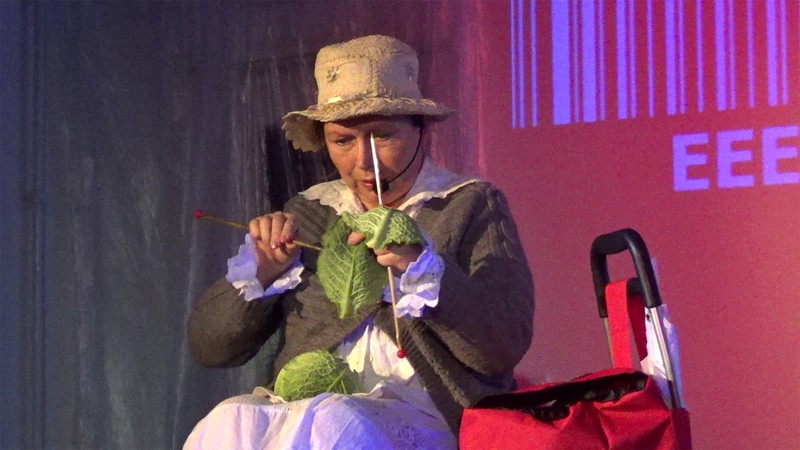
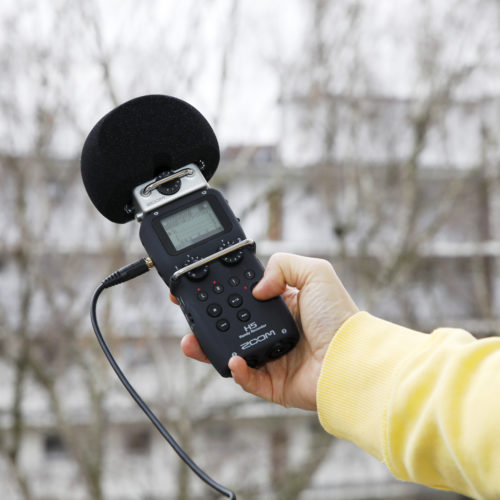
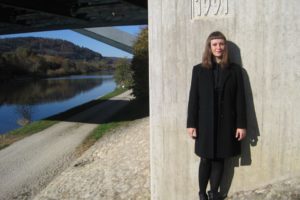
Comments are closed here.